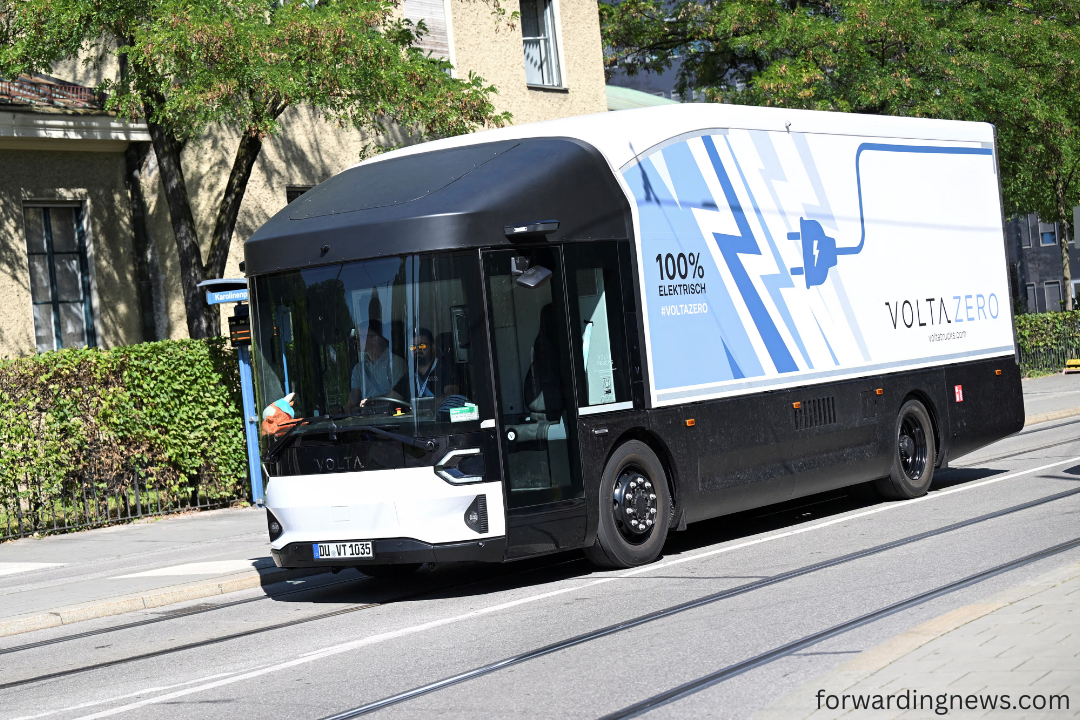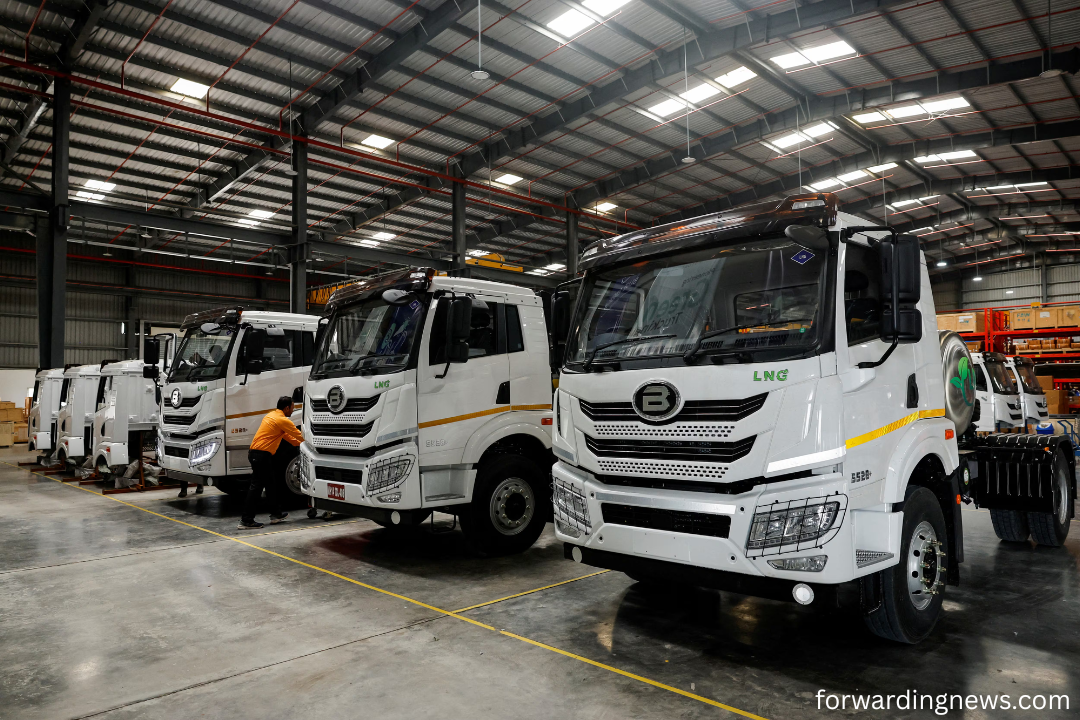China’s electric vehicle (EV) revolution is no longer limited to passenger cars. A significant shift is now taking place in the commercial transport sector, especially in heavy trucks. Contemporary Amperex Technology Co. Limited (CATL), the world’s largest battery manufacturer, forecasts that electric vehicles could represent up to 50% of all heavy trucks sold in China by 2028. This ambitious projection signals a turning point for the logistics and transport industries. With the rising focus on decarbonization, improving energy efficiency, and reducing operating costs, heavy trucks are poised to become the next major frontier for electrification.
CATL’s Role in Electrifying Heavy Trucks
CATL is no stranger to bold industry predictions. The Chinese battery giant is already a dominant force in EV battery technology, supplying lithium-ion cells to major automakers worldwide. Its involvement in the heavy trucks segment reflects a broader strategy to extend EV technology into high-load, long-distance transport applications.
The company recently unveiled a new generation of batteries specifically engineered for heavy trucks. These batteries offer longer ranges, shorter charging times, and better temperature resilience—key issues that have historically limited electric adoption in this vehicle class.
Why Heavy Trucks Are Key to China’s EV Goals
Electrifying heavy trucks aligns with China’s aggressive climate targets. The transportation sector is one of the most significant contributors to carbon emissions globally, and heavy trucks account for a substantial share of this output due to their fuel consumption and long operational hours.
By transitioning heavy trucks to electric power, China can make substantial progress toward its carbon neutrality goals by 2060. Additionally, reducing reliance on imported fossil fuels will further enhance energy security and economic resilience.
Market Trends Driving EV Adoption in Heavy Trucks
Policy Support and Incentives
Government incentives remain a key driver of EV adoption. China offers a range of subsidies and tax breaks aimed at accelerating the rollout of electric heavy trucks. Local governments also provide additional support, such as access to priority lanes, lower toll rates, and exclusive charging infrastructure.
Rising Fuel Costs and Operational Savings
Fuel is one of the most significant operational expenses for logistics companies. With diesel prices fluctuating and long-term forecasts indicating an upward trend, fleet operators are increasingly exploring electric heavy trucks as a cost-effective alternative. While the upfront cost is still higher, the total cost of ownership (TCO) becomes favorable over time thanks to lower fueling and maintenance expenses.
Advances in Battery and Charging Technology
Battery technology continues to evolve rapidly. CATL and other manufacturers are investing heavily in high-density, fast-charging battery packs tailored for heavy trucks. These innovations reduce range anxiety and enable longer routes with fewer charging stops, making electric freight more practical.
Infrastructure Expansion Supporting Heavy Trucks
China is leading the world in the development of EV charging infrastructure. The country already has hundreds of thousands of public charging stations and is now focusing on facilities capable of accommodating heavy trucks. This includes high-capacity fast-charging stations at key freight corridors, logistics hubs, and ports.
Private companies are also getting involved, partnering with logistics firms to develop dedicated depot-based charging solutions for electric heavy trucks. These setups allow for overnight charging, reducing downtime and maximizing vehicle usage.
Challenges That Still Exist for Heavy Truck Electrification
While the outlook is promising, several challenges need to be addressed before electric heavy trucks can dominate the market:
- High Initial Costs: Despite declining battery prices, electric heavy trucks still come with a higher sticker price than diesel models. For smaller logistics operators, the investment can be daunting without subsidies.
- Limited Range and Payload Impact: Although battery range is improving, long-haul routes remain a concern. Batteries also add weight, potentially reducing payload capacity—a critical issue for freight operators.
- Charging Time and Availability: Fast charging for heavy trucks requires specialized infrastructure that is not yet ubiquitous, particularly in rural or less-developed regions.
Logistics Industry Embraces EV Transition
Central logistics and freight companies in China are already taking steps toward electrification. E-commerce giants like JD.com and Alibaba have begun integrating electric heavy trucks into their distribution networks. These early adopters are setting benchmarks for sustainability while enjoying cost savings and improved brand perception.
Fleet management companies are also exploring leasing models for electric heavy trucks, which would allow smaller businesses to avoid the high upfront cost while benefiting from the long-term savings.
CATL’s Technology Advantage in the Heavy Truck Sector
CATL’s technological advancements give it a competitive edge in the heavy trucks market. The company is developing lithium iron phosphate (LFP) batteries known for safety, longevity, and affordability. Additionally, CATL is investing in solid-state battery research, which could revolutionize the heavy trucks category by offering even greater energy density and safety.
Their EV battery systems for commercial use include thermal management, regenerative braking, and cloud-based monitoring—all crucial for heavy-duty operations. These features are helping to make electric heavy trucks a viable option for more logistics players.
Global Implications of China’s Heavy Truck Shift

China’s move toward electrifying heavy trucks will likely have global ripple effects. As the largest market for commercial vehicles, China’s transition can drive down global battery costs, spur innovation, and set new emissions standards for other nations to follow.
If CATL’s prediction proves accurate, it could reshape the global heavy-duty vehicle landscape and accelerate EV adoption in regions like Europe, North America, and Southeast Asia. International manufacturers may need to rethink their strategies and product lines to stay competitive.
Investment Opportunities in Electric Heavy Trucks
As the electrification of heavy trucks gains pace, investors are increasingly eyeing this segment. Companies involved in battery production, charging infrastructure, EV manufacturing, and supply chain software stand to benefit. Startups focusing on battery swapping, fleet electrification analytics, and smart logistics also represent promising areas for growth.
With China leading the way, the electric heavy trucks industry could soon mirror the explosive growth seen in the passenger EV market over the past decade.
Frequently Asked Questions (FAQ’s)
Why are heavy trucks important in EV adoption?
Heavy trucks consume more fuel and generate higher emissions than other vehicles. Electrifying them has a more significant environmental impact and supports long-term cost savings.
What role does CATL play in electrifying heavy trucks?
CATL develops advanced battery technologies tailored for heavy trucks, offering more extended range, faster charging, and better durability.
Are electric heavy trucks available in China now?
Yes, several models are already in operation in logistics and construction, especially for short-haul and urban deliveries.
How will charging infrastructure support electric heavy trucks?
China is expanding high-capacity charging stations at logistics hubs, highways, and warehouses to support heavy truck operations.
What are the cost benefits of electric heavy trucks?
Although more expensive initially, electric heavy trucks offer lower fuel, maintenance, and operating costs over their lifetime.
Can heavy trucks run long-haul routes on electricity?
Current models are better suited for regional or urban routes, but advancements in battery technology are making long-haul EV trucking more feasible.
Which companies are using electric heavy trucks?
Chinese e-commerce and logistics giants like JD.com, Alibaba, and SF Express are already incorporating electric heavy trucks into their fleets.
How will electric heavy trucks affect global logistics?
As adoption grows, global shipping and freight industries will see reduced emissions, lower costs, and increased pressure to innovate and adapt.
Conclusion
China’s rapid movement toward electrifying heavy trucks marks a transformative moment for the global transport industry. With CATL’s leading technological innovation and government policy supporting EV infrastructure, the forecast that 50% of heavy trucks in China could be electric by 2028 is increasingly realistic. This shift promises significant benefits, from lower emissions and reduced fuel costs to enhanced energy independence. As the trend gains traction, the ripple effects will be felt worldwide, redefining how freight is moved across continents and ushering in a new era of sustainable heavy duty transport.

